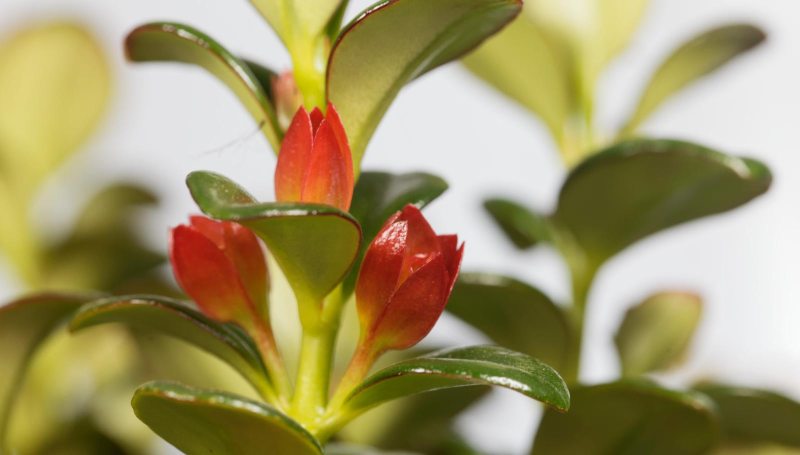Best Dog Friendly Garden Plants – From maintaining borders and protecting your plants, here’s how to make your garden dog-friendly.
Gardens can be wonderful, stimulating places for dogs. But dogs can also cause damage by digging up plants and urinating on lawns.
Best Dog Friendly Garden Plants

Gardens are also dangerous – some plants are poisonous to dogs, and there are other dangers, from harmful chemicals to sharp objects.
Dog Friendly Garden Designs
There are many things you can do to help your four-legged friend live in harmony, including planting non-toxic plants, creating designated areas for dogs and maintaining a garden.
By creating different paths around the garden, such as clear paths and designated areas for play or digging, your dog’s activity is encouraged. Different surface textures can be stimulating underfoot, and plants such as salix and ornamental grass dance and entertain.
Strong dogs can damage young plants or those with thin stems by digging or walking through them. Choose (and avoid) large, perennial and hardy plants such as nepeta, astilba and hardy geraniums.
It can be poisonous to dogs and confusingly goes by the common name geranium. Use a good column of sturdy shrubs such as viburnum or shrub roses.
How To Grow Grass With Dogs: 7 Simple Solutions |
Many garden plants are poisonous to dogs. These include chrysanthemum, aconite, butterfly, narcissus, daphne, delphinium, foxglove, hydrangea, oak, tomato, wisteria and yew (Taxus baccata). If you notice worrisome symptoms and suspect that your dog may have ingested plant parts, take your pet to the vet. Watch our video on plants poisonous to dogs.
Dogs can tear up lawns and borders. So use sand or bark to create a designated area for playing or digging. To prevent the dog from crossing your beds, you can create paths through the beds or place clearly defined boundaries, such as low-rise bricks. Raised beds are also a great option.
You can have a beautiful garden even if you have a dog – many plants are not dangerous to dogs.

Some dogs burrow under fences or escape through holes in fences. So, make sure your borders are basically protected. Dogs can jump incredibly high. Therefore, for a medium-sized dog, keep fences at least 6 feet high. Always keep the lids open.
The Grand Hotel
Keep an eye on your dog and make sure he doesn’t eat the poop. Do not use inorganic gut gels as they are toxic to all wildlife. Lungworms can be contracted by eating an infected slug, snake or frog. Symptoms include shortness of breath, coughing, lethargy and bleeding that lasts longer than usual.
Sheds can contain dangerous chemicals and sharp tools – make sure they are always securely closed.
Avoid using chemicals such as inorganic slug pellets, which can be harmful if your dog eats a slug or snake. Discover the biological treatment of slugs. Do not add additives to water features or ponds, as dogs will want to drink from them.
Like chocolate, this product from the chocolate industry can be harmful if consumed – and the smell of chocolate is tempting. Use an alternative topping like bark chips.
The 12 Best Dog-friendly Restaurants In Glasgow / Petspyjamas
Compost containers containing food scraps can attract dogs and contain contents that are harmful to them. Certain foods such as avocados, grapes, raisins and onions can be harmful. So make sure they don’t end up in your trash.
Rubbing can cause yellow spots on lawns. Teach your dog not to turn on the lawn and then spray it with a hose. Learn more about lawn mushrooms.
Better to be safe than sorry If you suspect your dog has eaten a plant, snake or garden snake and is showing signs of illness, don’t be afraid to take him to the vet.

The August issue of BBC Gardener’s World magazine is on sale now. Buy it now online or in stores. Poinsettias, holly, conifers and other popular seasonal plants to decorate or gift your home with, as well as cheerful gifts like cookies and socks, are part of the festivities. However, these and other live plants commonly used during the holiday season pose some risk to curious pets who want to eat the leaves, flowers or drink the water. And while we won’t discourage you from decorating your hallways with live plants, it’s important to know which pet-safe holiday plants are suitable for homes with furry friends, and which ones to avoid.
Dog Friendly Portland, Oregon Landscaping Design Ideas, By Christin Bryk
We asked Seal’s plant experts for advice on pet-safe Christmas plants you can swap out for the season’s most popular specimens. Even during the long and often dark days of the winter season, these recommended plants will provide the color and charm that only living plants can provide without endangering your pets. Here’s a quick plant chart that you can share for a deeper dive into what and where each plant is. Check out Seal’s collection of pet-friendly plants and learn more about our pet-friendly subscription.
Why are these plants “not” a problem for your pets? Here are some pet-safe houseplant replacements and new locations and tips for caring for your new pet-friendly plants. (Note: Click on each plant name to order animal-safe substitutes from Seal.)
Poinsettia (Euphorbia pulcherrima) has a milky, irritating sap that, if swallowed, can cause irritation in the mouth and stomach and sometimes induce vomiting. While not the most poisonous plant for pets, it is not the best! There are other good options.
Blooms bright pink or red flowers at Christmas. Although it can cause an upset stomach when used in large amounts, it generally does not pose a health risk to curious pets.
22 Pet-friendly Plants That Are Safe For Cats And Dogs
This hardy epiphytic succulent needs bright light and high humidity to grow. A sunny window away from heat sources should be sufficient. Do not submerge; Check the water level by lifting the container. When it’s bright, water it.
) Tree oils and tree needles can cause stomach upset in pets if ingested. Water, especially from trees, can contain oils and chemicals used by plants. Other conifers, including spruce and fir, pose a similar threat.
) is a slow-growing plant when grown indoors, no more than 30 cm per year, before reaching a height of 3 m. We’re not saying it’s a one-to-one replacement, but it’s a good choice for pets who tend to misbehave.

The palm tree is known as a very temperate plant. It may take a few tries to find the perfect spot, but this plant usually does well in a sunny spot with lots of light. Give him plenty of water and keep a spray bottle handy to mist him a few times a week.
The 10 Best Pet-friendly Plants For Your Garden
) contains lycorine and other harmful substances that cause vomiting, diarrhea, loss of appetite, as well as abdominal pain, lethargy and tremors in both cats and dogs. The bulb is said to be more poisonous than the flowers and stems.
The moth orchid (Phalaenopsis) has delicate flowers, cheerful color and, like the Victorian charm amaryllis, no potential side effects when eaten by pets. Plus, they bloom for several months and come in so many colors that they’ll probably match any room in the house.
Sun orchids like bright, direct light. East facing window st. Direct western or southern light is good. If the bark or moss feels dry and the pot is lighter in color, water the orchid thoroughly (until water comes out of the drainage hole at the bottom of the pot).
) have hairy leaves that usually prevent most pets from ingesting large amounts. But eating a few leaves or panicles can cause gastrointestinal symptoms, such as vomiting and diarrhea.
Dog Friendly Plants That Grow In Sand? Not Sany Soil, Sand.
It has beautiful, two-tone veined leaves, and while you wouldn’t call it a “perfect” replacement, it has a vibrant, leafy look that we go for when we want it on those dark winter days. very nice
It’s not the easiest house to grow, but you can manage it with a few tricks: give it moderate, direct light; Water only when the top 1-2 inches of soil is dry. Maintain high humidity to keep foliage clean – mist regularly or place in a bed of gravel. So easy!
) is toxic to both dogs and cats (whole plant). Eating a few leaves can cause vomiting and diarrhea, weakness, difficulty walking, lethargy, tremors or restlessness, and loss of appetite. The long-term effects can be serious.

Calathea makoyana has long, wavy green leaves with a deep green brush pattern on top and purple undersides. We want it to have the height, density and bold color of an azalea plant, but that’s about it

